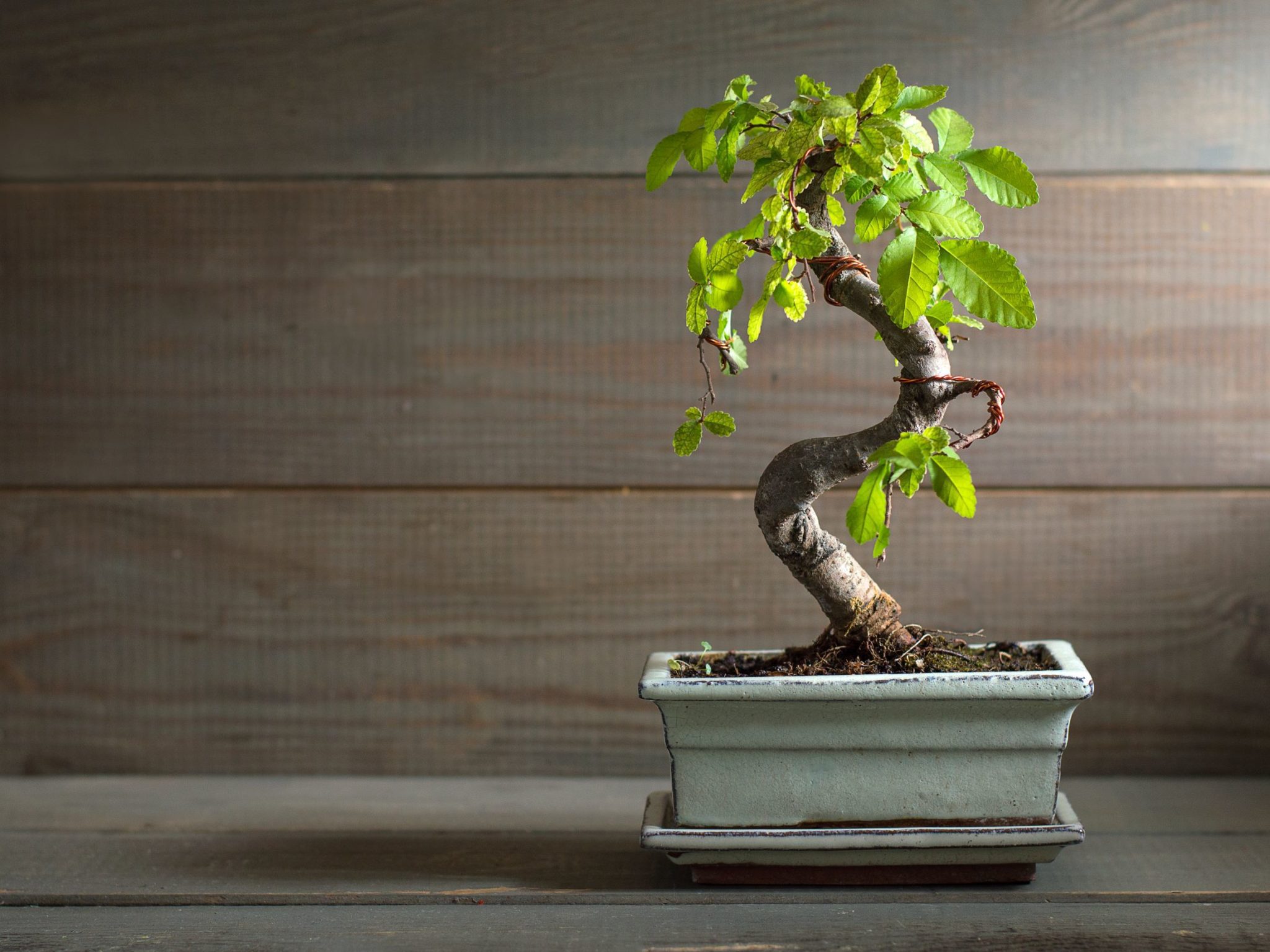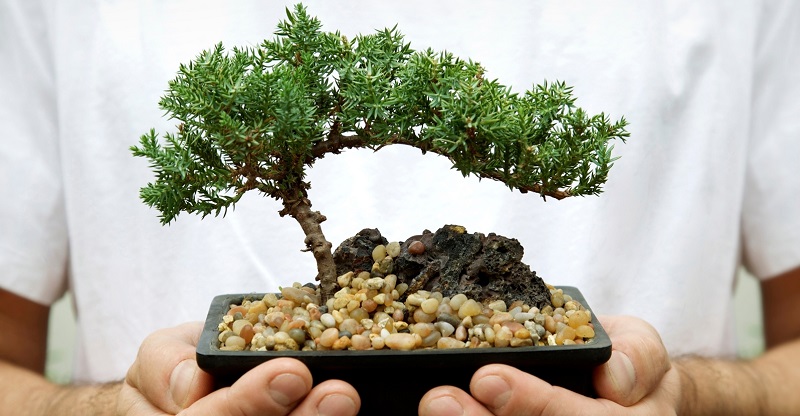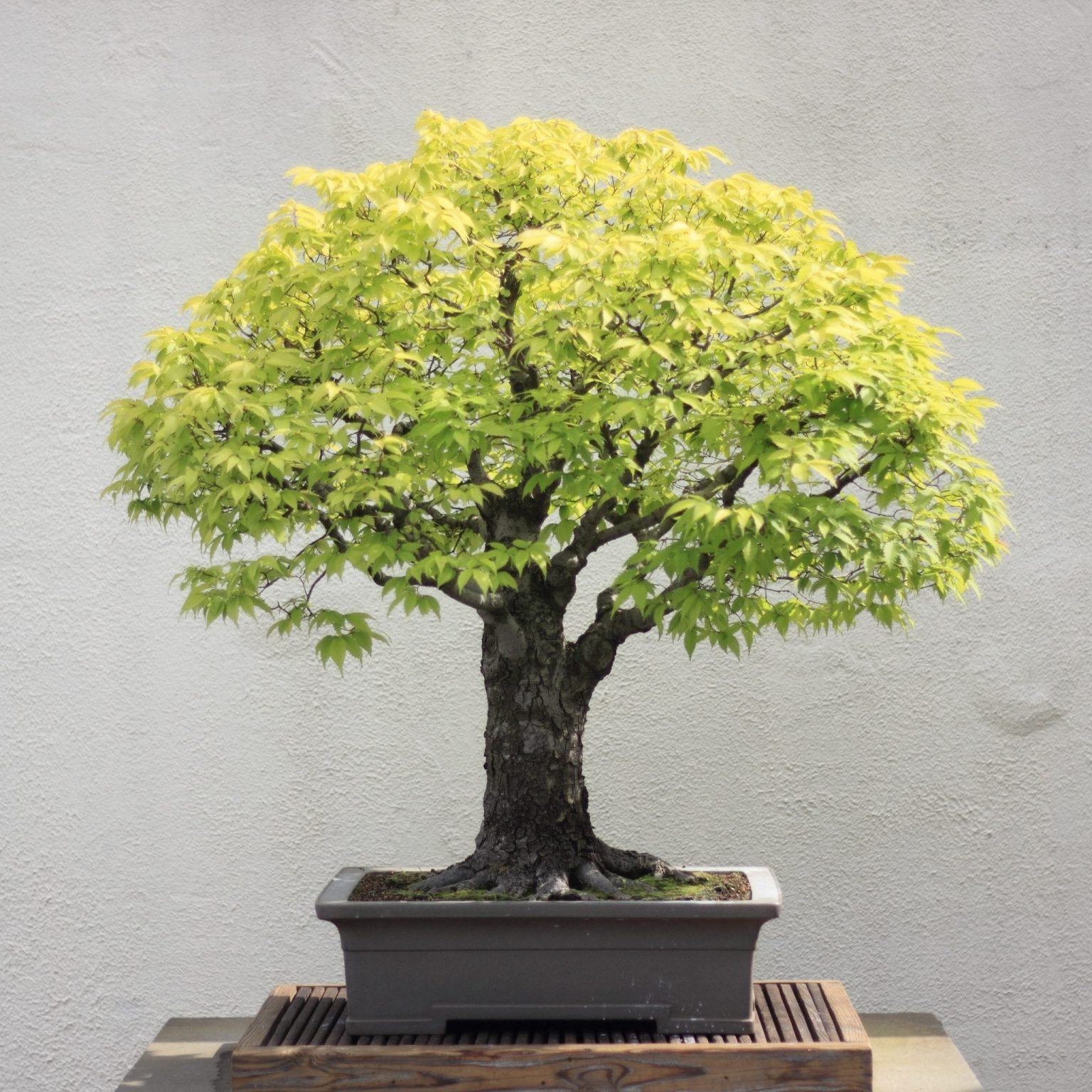The Art of Indoor Bonsai Tree Growing: Is it Possible?
For many, the idea of growing a bonsai tree indoors may seem like a daunting task. However, with the right knowledge and techniques, it is entirely possible to cultivate a thriving miniature tree in the comfort of your own home. In fact, growing a bonsai tree indoors can be a highly rewarding experience, offering a unique opportunity to connect with nature and create a stunning work of art.
One of the primary concerns for those considering indoor bonsai tree growing is whether the tree will receive sufficient light. While it is true that bonsai trees typically require bright, direct light to thrive, there are many species that can tolerate lower light conditions, making them ideal for indoor growing. Additionally, the use of grow lights can help supplement natural light, providing the necessary spectrum and intensity for healthy growth.
Another common misconception about indoor bonsai tree growing is that the tree will require a large amount of space. However, bonsai trees are, by definition, miniature, and can thrive in small pots and containers. This makes them an ideal choice for indoor growing, where space may be limited.
So, can you grow a bonsai tree indoors? The answer is a resounding yes. With the right species, proper care, and attention to detail, it is entirely possible to cultivate a stunning bonsai tree in the comfort of your own home. In fact, indoor bonsai tree growing offers a number of benefits, including year-round climate control, reduced pest infestations, and the ability to closely monitor and care for your tree.
Whether you’re a seasoned horticulturist or a beginner, growing a bonsai tree indoors can be a highly rewarding experience. By providing the right environment, care, and attention, you can create a truly unique and stunning work of art that will bring joy and beauty to your home for years to come.
Choosing the Right Bonsai Tree Species for Indoor Growing
When it comes to growing a bonsai tree indoors, selecting the right species is crucial for success. Not all bonsai tree species are well-suited for indoor growing conditions, and some may require more maintenance than others. To ensure that your indoor bonsai tree thrives, it’s essential to choose a species that is tolerant of low light conditions, infrequent watering, and temperature fluctuations.
Some popular bonsai tree species for indoor growing include Ficus (Ficus spp.), Juniper (Juniperus spp.), and Chinese Elm (Ulmus parvifolia). These species are known for their ability to tolerate low light conditions and infrequent watering, making them ideal for indoor growing. Ficus trees, in particular, are well-suited for indoor growing due to their small leaves and ability to thrive in low-light conditions.
Juniper trees, on the other hand, are known for their ability to tolerate dry conditions and can thrive in indoor environments with low humidity. Chinese Elm trees are also a popular choice for indoor growing due to their small leaves and ability to tolerate a range of lighting conditions.
When selecting a bonsai tree species for indoor growing, it’s essential to consider the specific needs and requirements of the tree. This includes factors such as lighting, watering, and fertilization. By choosing a species that is well-suited for indoor growing conditions, you can ensure that your bonsai tree thrives and remains healthy for years to come.
In addition to considering the specific needs and requirements of the tree, it’s also essential to consider the level of maintenance required. Some bonsai tree species may require more frequent watering, pruning, and fertilization than others. By choosing a species that is low-maintenance, you can ensure that your indoor bonsai tree remains healthy and thrives with minimal upkeep.
Ultimately, the key to success when growing a bonsai tree indoors is to choose a species that
How to Create a Suitable Indoor Environment for Your Bonsai Tree
Creating a suitable indoor environment for your bonsai tree is crucial for its health and well-being. When growing a bonsai tree indoors, it’s essential to replicate the natural conditions that the tree would experience outdoors. This includes providing the right amount of light, temperature, humidity, and air circulation.
Lighting is one of the most critical factors to consider when growing a bonsai tree indoors. Most bonsai trees require bright, indirect light to photosynthesize and grow. However, some species can tolerate low light conditions, making them ideal for indoor growing. To provide the right amount of light, consider using grow lights, which can be placed above or beside the tree.
When choosing grow lights, consider the type of light spectrum and intensity required by your bonsai tree. LED grow lights are a popular choice, as they provide a balanced spectrum and are energy-efficient. Fluorescent grow lights are also a good option, as they provide a broad spectrum and are relatively inexpensive.
Temperature is another critical factor to consider when growing a bonsai tree indoors. Most bonsai trees prefer daytime temperatures between 65-75°F (18-24°C) and nighttime temperatures around 55-65°F (13-18°C). Avoid placing your bonsai tree near heating or cooling vents, fireplaces, or drafty windows, as this can cause temperature fluctuations.
Humidity is also essential for bonsai tree health. Most bonsai trees prefer a humid environment, typically between 40-60% relative humidity. To maintain the right humidity level, consider using a humidifier or placing the tree on a tray filled with water and pebbles.
Air circulation is also crucial for bonsai tree health. Good air circulation helps prevent fungal diseases and promotes healthy growth. To ensure good air circulation, place your bonsai tree at least 6-8 inches away from any walls or surfaces, and consider using a fan to circulate the air.
By providing the right amount of light, temperature, humidity, and air circulation, you can create a suitable indoor environment for your bonsai tree. Remember to monitor your tree’s response to its environment and adjust as necessary to ensure optimal health and growth.
The Importance of Proper Watering and Fertilization
Proper watering and fertilization are crucial for the health and growth of your indoor bonsai tree. Over-watering or under-watering can lead to root rot, leaf drop, and other problems, while inadequate fertilization can result in stunted growth and poor health.
To determine the right watering schedule for your bonsai tree, check the soil moisture by sticking your finger into the soil up to the first knuckle. If the soil feels dry, it’s time to water. Water your bonsai tree thoroughly, making sure the pot drains well to prevent waterlogged soil.
The frequency of watering will depend on the species of your bonsai tree, the size of the pot, and the humidity and temperature of your indoor environment. As a general rule, water your bonsai tree when the top inch of soil feels dry to the touch.
Fertilization is also essential for the health and growth of your bonsai tree. Use a balanced, water-soluble fertilizer that is specifically formulated for bonsai trees. Dilute the fertilizer to half the recommended strength to prevent burning the roots.
Apply the fertilizer during the growing season, which is typically spring and summer. Avoid fertilizing during the dormant season, as this can cause new growth that may not have time to harden off before the tree goes dormant.
Some bonsai tree species, such as Ficus and Juniper, require more frequent fertilization than others. Research the specific fertilization needs of your bonsai tree species to ensure you are providing the right amount of nutrients.
In addition to fertilization, consider repotting your bonsai tree every 2-5 years to refresh the soil and provide a larger pot if necessary. This will give the roots room to grow and help maintain the tree’s overall health.
By following these guidelines for watering and fertilization, you can help your indoor bonsai tree thrive and maintain its health and beauty for years to come.
Pruning and Training Your Indoor Bonsai Tree
Pruning and training are essential techniques for maintaining the shape and promoting healthy growth of your indoor bonsai tree. Pruning involves cutting or removing branches and leaves to control the tree’s size and shape, while training involves using wires and other tools to shape the tree’s branches and trunk.
There are several pruning techniques to use on your indoor bonsai tree, including reduction pruning, maintenance pruning, and pinching. Reduction pruning involves cutting back branches to reduce the tree’s size, while maintenance pruning involves removing dead or damaged branches to maintain the tree’s health. Pinching involves removing the tips of new growth to encourage branching and promote a fuller shape.
To prune your indoor bonsai tree, use a pair of sharp, clean bonsai scissors or pruning shears. Make clean cuts just above a node, and avoid tearing or ripping the bark. Remove any dead or damaged branches, and cut back new growth to maintain the tree’s shape.
Training your indoor bonsai tree involves using wires and other tools to shape the tree’s branches and trunk. Aluminum or copper wires are commonly used for bonsai tree training, as they are flexible and can be easily shaped. Use the wires to gently bend the branches into the desired shape, and remove the wires after a few months to avoid damaging the tree.
Other tools used for bonsai tree training include bonsai tree turntables, which allow you to easily rotate the tree to access all sides, and bonsai tree pruning tools, such as concave cutters and root hooks. These tools can help you shape the tree’s branches and trunk, and remove dead or damaged roots.
By pruning and training your indoor bonsai tree regularly, you can maintain its shape and promote healthy growth. Remember to prune and train your tree gently, as excessive pruning or training can damage the tree and lead to disease or pest problems.
Regular pruning and training can also help prevent common problems, such as overgrowth and root bound conditions. By controlling the tree’s size and shape, you can prevent it from becoming too large for its pot, and by removing dead or damaged roots, you can prevent root rot and other problems.
Common Challenges and Pests to Watch Out for
While growing a bonsai tree indoors can be a rewarding experience, there are several common challenges and pests to watch out for. By being aware of these potential issues, you can take steps to prevent and treat them, ensuring the health and well-being of your tree.
One of the most common challenges faced by indoor bonsai tree growers is spider mites. These tiny, spider-like insects can cause significant damage to your tree, sucking the sap from the leaves and causing them to turn yellow or white. To prevent spider mites, make sure to provide your tree with good air circulation and keep the humidity level high.
Mealybugs are another common pest that can affect indoor bonsai trees. These small, white insects can cause damage to the leaves and stems of your tree, and can also spread disease. To prevent mealybugs, inspect your tree regularly and remove any infested areas. You can also use insecticidal soap or neem oil to treat infestations.
Root rot is a common problem that can affect indoor bonsai trees, particularly if the tree is over-watered or if the potting mix is not well-draining. To prevent root rot, make sure to water your tree carefully and avoid getting water on the trunk or roots. You can also use a well-draining potting mix and repot your tree regularly to prevent root bound conditions.
Other common challenges faced by indoor bonsai tree growers include scale, aphids, and whiteflies. These pests can cause significant damage to your tree, and can also spread disease. To prevent these pests, make sure to inspect your tree regularly and remove any infested areas. You can also use insecticidal soap or neem oil to treat infestations.
In addition to these pests, indoor bonsai trees can also be susceptible to disease. Fungal diseases, such as root rot and leaf spot, can be caused by over-watering or poor air circulation. Bacterial diseases, such as leaf spot and blight, can be caused by poor sanitation and hygiene. To prevent disease, make sure to provide your tree with good air circulation, water carefully, and maintain good sanitation and hygiene practices.
By being aware of these common challenges and pests, you can take steps to prevent and treat them, ensuring the health and well-being of your indoor bonsai tree.
Displaying and Enjoying Your Indoor Bonsai Tree
Once you have successfully grown and trained your indoor bonsai tree, it’s time to display and enjoy it. Choosing the right pot and creating a visually appealing display can enhance the beauty of your tree and add to its overall aesthetic.
When selecting a pot for your indoor bonsai tree, consider the size and shape of the tree, as well as the style and color of the pot. A shallow pot with good drainage is ideal for most bonsai trees, as it allows for healthy root growth and prevents waterlogged soil.
Consider using a pot that complements the color and texture of your tree’s trunk and leaves. For example, a ceramic pot with a natural, earthy tone can complement the rustic beauty of a juniper bonsai tree.
In addition to choosing the right pot, consider creating a visually appealing display for your indoor bonsai tree. This can include adding decorative rocks, moss, or other plants to the pot, or placing the tree on a decorative tray or stand.
When displaying your indoor bonsai tree, consider the overall aesthetic you want to create. Do you want to create a natural, rustic look, or a more modern and sleek display? Choose decorative elements that complement the style and beauty of your tree.
Another way to enjoy your indoor bonsai tree is to create a bonsai tree display table or shelf. This can be a dedicated space where you can display your tree and other bonsai-related items, such as bonsai tree tools and accessories.
By displaying and enjoying your indoor bonsai tree, you can appreciate its beauty and uniqueness, and share it with others. Whether you choose to display your tree in a traditional or modern setting, it’s sure to be a conversation starter and a source of pride.
Maintaining Your Indoor Bonsai Tree for Long-Term Success
To ensure the long-term success of your indoor bonsai tree, it’s essential to monitor its health, adjust its environment, and plan for its future growth. By following these steps, you can help your tree thrive and maintain its beauty for years to come.
Monitoring your tree’s health involves regularly inspecting its leaves, trunk, and roots for signs of disease or pests. Check for yellowing or browning leaves, soft or mushy trunk, and roots that are circling or growing out of the pot.
Adjusting your tree’s environment involves making changes to its lighting, temperature, humidity, and air circulation as needed. For example, if your tree is not receiving enough light, you may need to move it to a brighter location or add supplemental lighting.
Planning for your tree’s future growth involves considering its long-term needs and making plans to meet those needs. For example, you may need to prune your tree regularly to maintain its shape and promote healthy growth.
Another important aspect of maintaining your indoor bonsai tree is repotting. Repotting involves transferring your tree to a new pot with fresh soil and a larger root system. This helps to provide your tree with the nutrients it needs to grow and thrive.
When repotting your tree, choose a pot that is only slightly larger than the previous one. This will help to prevent the soil from becoming too wet and reduce the risk of root rot.
Finally, consider the long-term care and maintenance of your indoor bonsai tree. This includes regular pruning, fertilization, and pest control. By following these steps, you can help your tree thrive and maintain its beauty for years to come.







